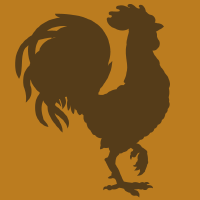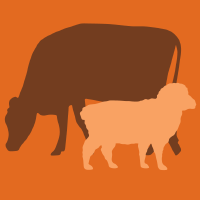Topic Editors



Carcass Characteristics and Meat Quality in Farm Animals
Topic Information
Dear Colleagues,
Much can be learned about an animal from its carcass at the slaughterhouse, including information about its history, health status, and the level of welfare throughout its life. All the factors related to the genetics, breeding, transport and finally, the stunning of the animals can affect the quality of meat and the carcass. In terms of meat quality, we can consider it as assessed by classical parameters such as pH, colour and tenderness. In alternative terms, we can adopt a holistic approach, by which quality is considered as the summation of the qualities enabling meat to be accepted, appreciated and finally, chosen by consumers. In such a view, some new factors must be taken into account. The market rewards meats that are labelled for their level of antibiotic consumption and sustainability, and the latter can be factorized in multiple components in which the environment plays a crucial role. In order to maximise the environmental acceptability, or to minimize the impact, it is crucial to reduce all losses throughout the meat chain. Again, reducing the minimum production losses resulting from partial and total rejections associated with poor animal welfare and health conditions is necessary to achieve this result. Furthermore, it is necessary to minimise production losses resulting from the partial and total rejections associated with poor animal welfare and health conditions. Papers concerning these factors are welcome in this Topic.
Dr. Sergio Ghidini
Dr. Madalena Vieira-Pinto
Dr. Raffaella Branciari
Topic Editors
Keywords
- carcass characteristics
- carcass composition
- meat quality
- pH
- colour
- tenderness
- sensory quality
- texture
Participating Journals
| Journal Name | Impact Factor | CiteScore | Launched Year | First Decision (median) | APC | |
|---|---|---|---|---|---|---|

Foods
|
5.2 | 5.8 | 2012 | 13.1 Days | CHF 2900 | Submit |

Poultry
|
- | - | 2022 | 25.1 Days | CHF 1000 | Submit |

Ruminants
|
- | - | 2021 | 20.9 Days | CHF 1000 | Submit |

MDPI Topics is cooperating with Preprints.org and has built a direct connection between MDPI journals and Preprints.org. Authors are encouraged to enjoy the benefits by posting a preprint at Preprints.org prior to publication:
- Immediately share your ideas ahead of publication and establish your research priority;
- Protect your idea from being stolen with this time-stamped preprint article;
- Enhance the exposure and impact of your research;
- Receive feedback from your peers in advance;
- Have it indexed in Web of Science (Preprint Citation Index), Google Scholar, Crossref, SHARE, PrePubMed, Scilit and Europe PMC.

